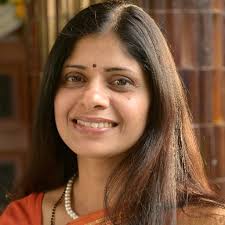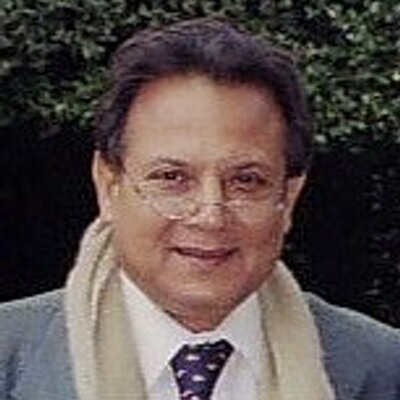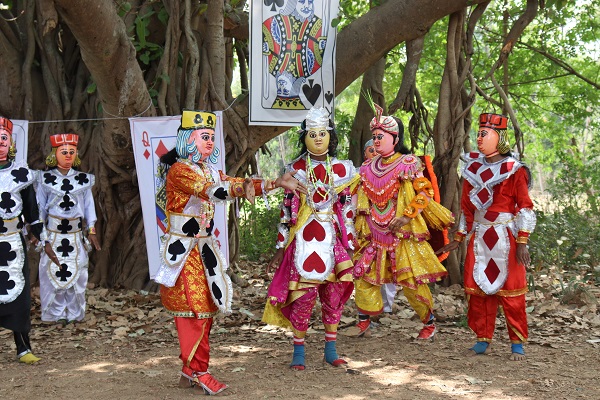Is Theater a Sacred Ritual or Entertainment?
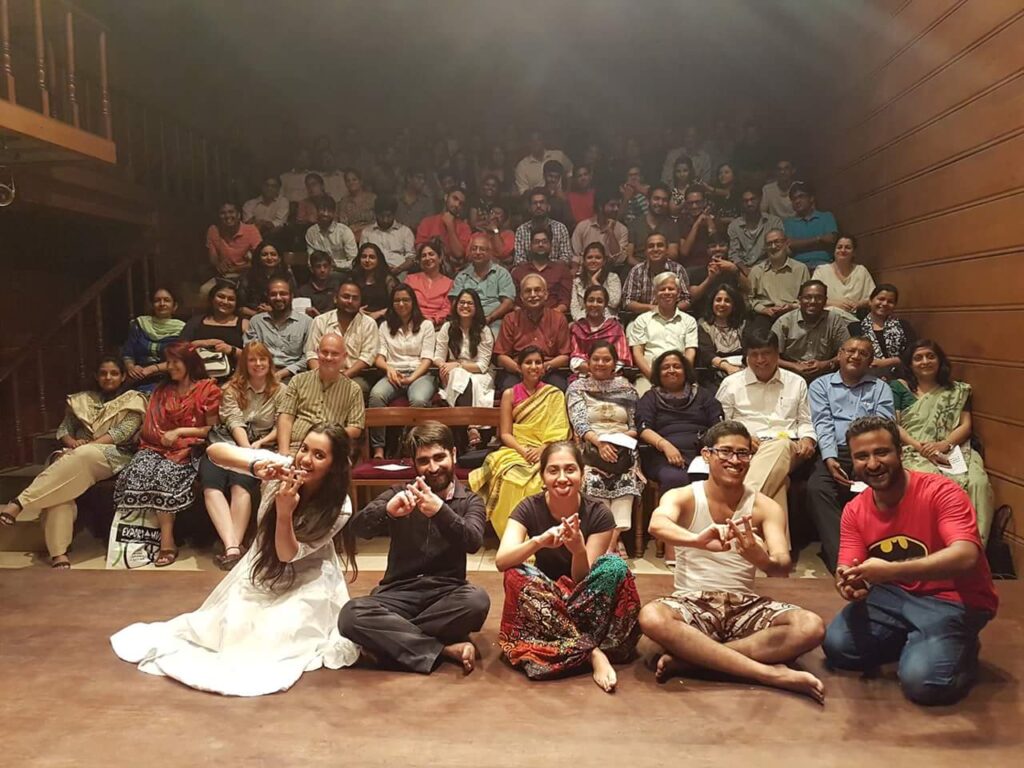
‘The world is hungry and not concerned with culture,’ (Artaud, 1958, 7, The Theater & its Double). In talking about culture Artaud was primarily referring to the theater of the West. I am not in a position to comment on all art and culture, but I can say without hesitation that the world is not concerned with the theater. Today, theater groups in Delhi perform in cramped, poorly ventilated rooms because they cannot fill seats in a standard 200 seat auditorium in Mandi House. Theater makers say the audience has switched preferences but it might be worth examining whether theater itself has lost touch with its purpose and language. People go to the theaters for entertainment, but the end goal of theater is not mere entertainment. In both ancient Greek and Indian traditions drama was supposed to bring about emotional arousal and aesthetic pleasure. The Greeks called this end goal, Katharsis and Natayshastra calls it Rasa. The future of theater lies, perhaps, in understanding its true spiritual-aesthetic purpose because the purpose informs the form.
If theater is merely a mode of entertainment then it is expensive and inconvenient for the audience. A viewer can watch shows on his phone from the comfort of his house, whereas to watch theater the audience has to travel to a hall, buy a ticket that costs more than their monthly Netflix subscription, and then sit cramped for two hours. Theater is inconvenient even for the actor because it brings neither fame nor money. Also, an actor can reach millions of fans via live streaming, why should he perform for 200 people? The cost of mounting a production is going up, but the audience has got used to what seems like free entertainment on TikTok, You Tube and other portals.
Theater as a mode of spectacle has limited resources at its disposal. For example K-Pop live performances have more visual appeal than a Chekov’s play. A typical K-pop show has huge LED Screens, pre-recorded videos, installations, fireworks, laser lights show, flying cars, fantastic costumes, choreographed dance, storytelling and live music – that is all the elements of theater. On the other hand, cinema and OTT platforms are advancing technology for camera, lighting, editing and CGI to make binge-worthy shows. Media companies also employ social media algorithms to reach their target audience. How can theater with its humble resources match the spectacle sponsored by corporate money? This realization dawned upon Grotowski, a Polish theater maker, as early as 1960s. Grotwoski was categorical that theater could never match cinema or Television and it should stop trying.
Urban theater is trying to re-invent to remain relevant. Theater companies are creating digital versions of their shows to stream on demand in the hope that a Netflix like subscription will earn them revenue. It is theater’s desperate attempt to stay afloat because the economics work against it. On the other hand, Broadway and West End continue programming musicals like ‘The Lion King’, “Mama Mia’, and ‘Moulin Rouge’. The show makers at Disney and Broadway are convinced the audience comes to the theaters to watch a spectacle. I doubt digitization or extravaganza can save theater. Whereas, digital theater is neither live nor cinematic, Disney/Broadway/West End shows are beyond the reach of an average person.
Antonin Artaud, the French theater director-writer was the first Western theater maker to write about the spiritual dimension of theater. By comparing Oriental theater with Western theater in his seminal book, The Theater & its Double (published 1938), Artaud establishes the real purpose of theater. ‘Everything in this theater is immersed in profound intoxication which restores to us the very elements of ecstasy’ (65) Artaud calls Oriental theater as pure and metaphysical theater that alone can express secret truths by gesture, poetry, mime, symbols, hieroglyph costumes, music and more. By secret truths Artaud means the sacred truth that can be revealed and experienced through religion and art. ‘Here is a whole collection of ritual gestures’ (55) says Artaud. Aratud makes repeated reference to ritual, metaphysical and spiritual aspect of Oriental theater. ‘This aspect of matter as its revelation, suddenly dispersed in signs to teach us the metaphysical identity of concrete and abstract’ (59). There is no mention of commercial success or entertainment. Artaud talks of ecstasy, joy and a state of trance triggered by this theater as if theater were a ritual or a mystical experience. ‘In a spectacle like that of Balinese theater there is something that has nothing to do with entertainment, the notion of useless , artificial amusement, of an evening’s pastime which is the characteristic of our theater. There is something of the ceremonial quality of a religious rite.’ (58)
Balinese theater is based on Natyashastra, a treatise on ancient Indian drama, written at least 5,000 years ago. Therefore, a study of the ancient texts on aesthetics and performance be it Natyashastra or Poetics can inform us on the real nature of theater. Let’s not forget these texts have created dramatic works that have lasted a few thousand years. The story of the origin of Indian drama itself explains the purpose of drama in ancient India. The story goes that one day Gods approached Brahma and requested him to create a play like activity that would impart the knowledge of the four Vedas to all men and women, irrespective of their caste and vocation. Thus Brahma created the fifth Veda called Natyaveda. Then Brahma imparted the knowledge to sage Bharata Muni and instructed him to compose Natayshastra, a book that deals with all aspects of theater. Natayshastra lays out a complex Rasa theory of aesthetics. Dr. Bharat Gupt, an eminent Classicist and scholar explains rasa, ‘Dominant emotions like sexual passion, attachment, anger, fear and others are transformed into rasa, or are tasted as rasa, when they are mixed with transitory emotions like dejection, guilt, doubt, intoxication and so forth. This occurs when they are communicated through verbal and physical acting.’ (Gupt, 1994, 262, Dramatic Concepts Greek & Indian) The above definition suggests that Indian classical drama aimed to bring about a transformation of emotions in the audience.
Even Poetics, the ancient manual of Greek drama, upholds Katharsis as the primary aim of tragedy. Dr Bharat Gupt explains Katharsis, ‘As the tragic action progresses, the lower forms of emotion are found to have been transmuted into more refined forms. This purification is also a change of the personal emotion to the Universal. Katharsis is a restorative process; it frees the spectator of emotional unbalance.’ (Gupt, 257) Here again transformation of emotions is the goal of drama. Even though Aristotle talks of hedone or the pleasure proper to tragedy, but it is not pleasure alone that is the aim of drama. ‘In ancient Greece the plays were performed as a ceremony in a chain of ceremonies at Dionysian festival’. (Gupt, 128) The festival was held on auspicious days that were marked as auspicious because of their astronomical significance. It was a time when the ancient Greeks came together as a community to celebrate, purge, restore balance, and communicate with the Gods. Drama was just one part of the whole sacred process.
Let us now examine the purpose of a religious ritual. ‘Purpose of ritual was to conduct people across the difficult thresholds of transformation that demand a change in patterns not of conscious but also of the unconscious life.’ (Campbell, 1949, 6, The Hero with a Thousand Faces) These thresholds are the important milestones of human life like birth, puberty, marriage, and death. Campbell says the ritual purges man of infantile fixation. Religious rituals were created to purge and transform. ‘The prime function of mythology and rite to supply the symbols that carry the human spirit forward in counteraction to those constant human fantasies that tend to tie it back.’ (Campbell, 7) We can see both ritual and drama had the same purpose to assist human beings to restore balance in their lives. The unbalance that life experiences bring about needs a constant correction and the ancients created rituals and drama as therapy. Also, both ritual and drama are performed in a sanctified space. When an audience/devotee enters the space he agrees to participate in the transformation. What is worth considering is that not all stories were considered worthy of dramatic presentation. ‘In all ancient societies the purpose of retelling the muthoi/story, particularly on festive occasions, was many-fold; it was to preserve and transmit the stories, to re-state the beliefs they enshrined and to relive the behavior patterns sanctified by the tradition. The retelling always had a ritual significance even if it took the form of dramatic enactment for the purpose of entertainment.’ (Gupt, 259)
A discussion on theater and ritual is incomplete without talking about Richard Schechner's Performance Theory. In the eighties anthropologists like Victor Turner were already writing about social drama that plays out in everyday life. ‘Something like drama was constantly emerging, even erupting, from the otherwise fairly even surface of social life.’ (Turner Victor, 6, From Ritual to Theater, 1982) ‘Every type of cultural performance including ritual, ceremony, carnival, theater and poetry is explanation of life itself.’ (Turner,8) Schechner, a theater director, actor, and drama theorist built on Turner’s work and redefined performance, ‘performing onstage, performing in special social situations (public ceremonies, for example), and performing in everyday life are a continuum’. (Schechner, 2002, 143, Performance Studies) In a video lecture series available on Companion Websites, YouTube Channel, Schechner says, “we are always structuring our lives as performance.” As in we are always performing, be it social roles e.g. being a father, or an occupational role e.g. a judge in the court, or an aesthetic performance or when we perform a sacred ritual. Schechner shifts the meaning of performance by including every human action in its realm, “there is an infinity loop between social performance and aesthetic performance.”
It is not as if there is no difference between a ritual proper and a dramatic performance. Their end goals are different and a ritual in drama cannot replace a religious ritual. ‘The prime purpose of a ritual act is to seek a benediction. In case a ritual is not a prayer, it may be enacted for the recognition of a social contract or for a pledge such as marriage.’ (Gupt, 65) A religious ritual is performed by an individual to seek fulfillment of a wish, but the dramatic performance is done only to please or perhaps instruct. Dramatic performance was a ritual only to the extent that it was meant to please both Gods and men, whereas a ritual was meant to please only Gods. Dr. Gupt insists ‘ ritual, myth and drama have co-existed. With change of purpose, one form changes into the other. Many rituals grow into entertainments..For example, the Garba dances of Guajart, were performed till the last decade on a specific religious occasion, but they are now being danced as a form of secular celebration. Many rituals were originally entertainments which became converted to into ritualistic repetitions for maintenance of tradition. The swing festival ‘teej’ of North India, now done ritually, was an entertainment for the rainy season.’ (Gupt, 66).
Today’s secular theater is removed from its ritual roots. In treating theater as another source of entertainment we have put it in a false competition with TV and OTT shows. As a result theater looks weak and outdated. We must remember that theater has a spiritual dimension and theatergoing should be both cathartic and pleasurable. It’s the higher kind of pleasure that theater strives for. Even porn gives pleasure but what we seek in theater is a pleasure worth tasting. Bharata Muni says only that which is worthy of tasting is rasa vishesh or capable of giving rasa. Art that can lead to the four purusharthas or the goals of human life - dharma, artha, kama, and moksha is capable of giving rasa. So how do we create a piece of theater that can help the audience and the performer realize all the purursharthas? It is not possible to return to the ancient sacred theater but perhaps we could borrow elements from sacred rituals to create powerful dramatic performances. For example a fire in a yajna or a shaman ritual or a tribal dance evokes an emotional response that is primeval and psychic. When effectively employed in a performance, the fire or even embers can tap into the same emotion. Even today in a Koodiyattam performance an oil lamp is the focal point of the performance. Hymns, chants, bells, conch, incense sticks that are part of most religious rituals, when used in a performance can create an immersive sensory experience. At a deeper level, theater makers need to ask themselves are they making a performance that can elevate our experience of life. If theater makers remain clear sighted about the sacred purpose of theater, they can make theater a mystical and aesthetic experience. 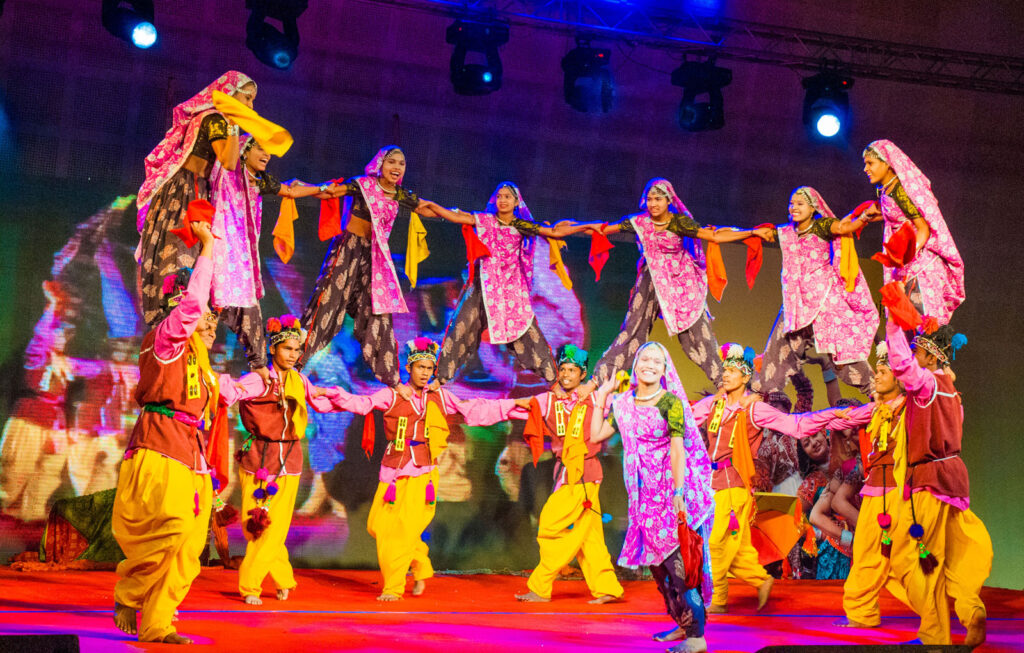
(I am grateful to Dr. Bharat Gupt for his expert advice on theater and to Dr. Otis Haschemeyer for his feedback on structure and writing. I wish to extend special thanks to Aparna Sridhar for the critique on the final draft.)
If any of you have any reactions then please comment on the website below the article so that the author can respond and know that people are engaging with the content. Thanks Ed.
